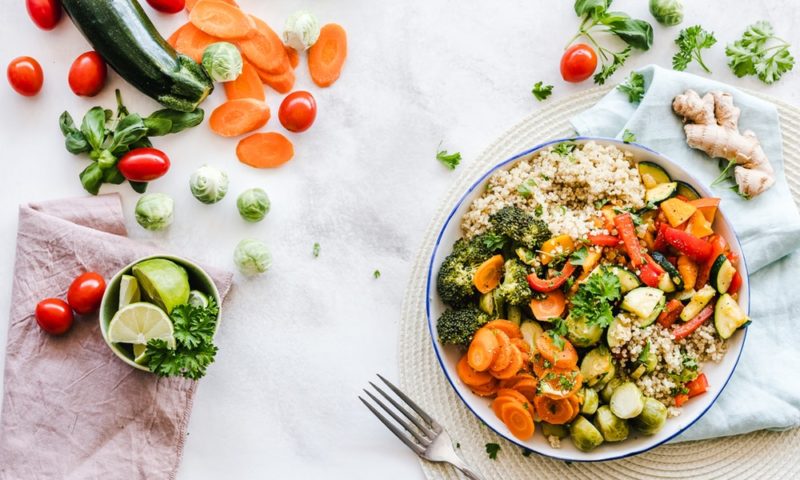Grilled chicken salad, taco bowls, veggie pasta… what’s on your plate and how can you make it healthy? Nutrition pros throw out the word “balanced” as if it’s intuitive or second nature — and while it should be, many of us need a little coaxing to learn how balanced meals are crafted.
Tips to Build a Balanced Meal
With all the health and nutrition info floating around out there, finding a balance between healthy options can be tricky — especially when you factor in taste, ingredients and cooking ease.
But finding the right plan and striking a healthy balance with what you eat is totally possible. Start with these ground tips to make sure you’re eating fresh, fun and fit.
Tip 1: Start with Protein
Protein is a body-building nutrient made from amino acids. It’s crucial to cell structure and function — like building muscle. It also keeps you feeling fuller between meals.
A good rule of thumb is to make 1/4 of your meal lean protein-based. Examples include lean chicken, turkey, beef, fish or low-fat dairy. For tasty, protein-rich meals, try options like lunch meat roll-ups with cheese, spicy ground taco meat or lemon pepper fish.
Fill Up on Veggies and Fruits
Turn your plate into a rainbow! Carrots, greens, apples, mixed berries and Brussels sprouts (to name a few) are rich in vitamins, minerals, antioxidants, fiber and are low in calories.
How much should you eat? Aim to make fruits and veggies take up half your plate, but try not to douse them in heavy sauces, butter or creams which are high in calories.
Carbs are OK – Make them Healthy!
Despite much “research” claiming otherwise, healthy carbs can be incorporated into your nutrition plan and provide many great benefits. Carbs are a primary source of energy, and healthier options include brown rice, quinoa and whole grain pasta.
How much? Include whole grain options in 1/4 of your plate. This can include whole grain pasta, bread, tortillas, rice and quinoa salad.
Putting it All Together
Let’s recap. An example of a healthy, balanced plate includes 1/4 protein, 1/4 whole grain carbs and 1/2 veggies and fruits. This will give you plenty of nutrients and keep you full.
And while there’s some things that don’t typically belong on your plate such as desserts or fried foods, this doesn’t mean they’re never to be eaten. Just choose them sparingly and focus on the healthier, balanced foods that will enhance your lifestyle.






